Weekly round-up: 26 Feb - 04 Mar 2014
At long last, the weather in the past week began to feel like normal late-winter weather, rather than what we’re fast being forced to accept as the norm. So, less of the crazy, incessant gales, and rather more normal showers, sunny periods, and even some frosts in low-lying areas and snow on high ground.
Bird-wise it was largely as-you-were, with many lingering rarities still hanging around, and just one or two new surprises to leaven the mix.
Late breaking news goes straight to the top of the class this week, with the belated discovery of a probable juvenile Thayer’s Gull in Argyll, on Islay at what has to be my absolute favourite location on the island, Bruichladdich. Such a thing of subtle beauty, giving lingering pleasure long after the initial contact. And that’s just the whisky…
Identified from photographs taken at the time, it remains to be seen if the bird will be relocated. Needless to say, with the species yet to pass the finishing post and find its way onto the British list, this would be a first for Argyll if confirmed.
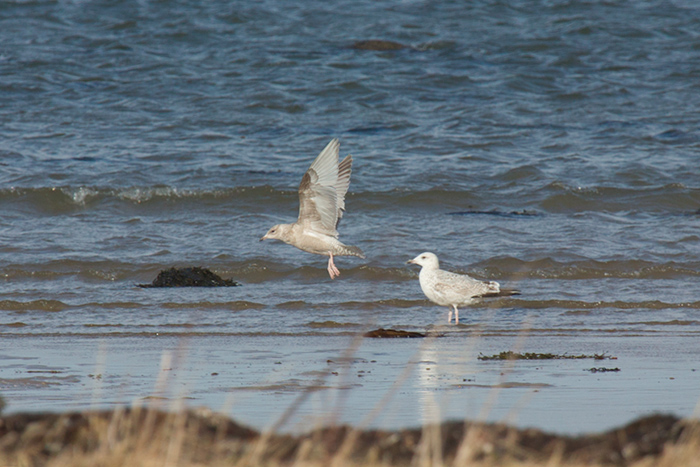
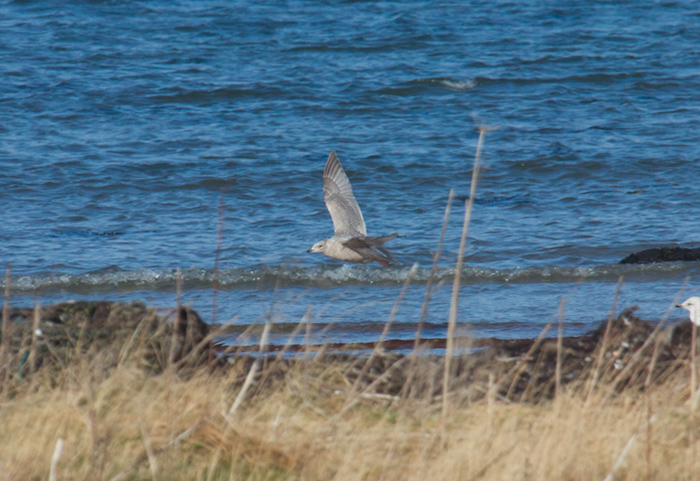
Still in Kent all week was the presumed Chinese Pond Heron of unknown origins, a bird that is staking an early and firm claim for most minutely-debated bird of 2014. Discussions continued unabated online all week as to specific identity, the range and vagrancy potential of Chinese Pond Heron and, of course, where best to see the confounded thing. With some birders now approaching double-figures for the visits racked up trying to catch up with the elusive beast, nothing about this bird is entirely straightforward.
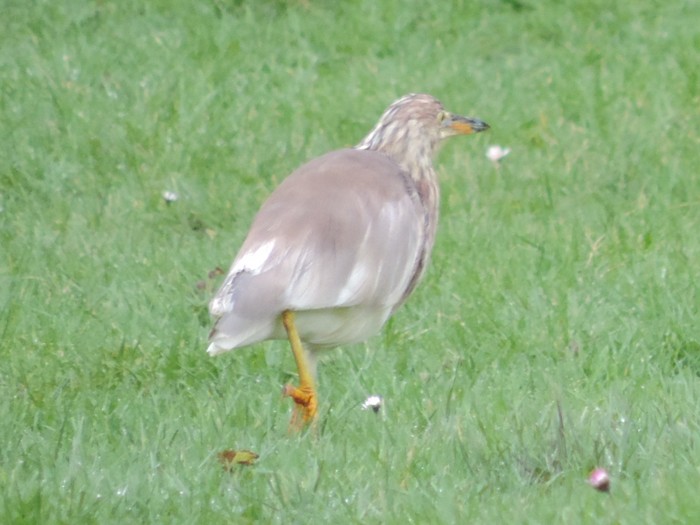
On every level, it’s now a waiting game. For some, just for the opportunity to see the bird. For us all, for the identity to unfold definitively once and for all, though the straws in the wind seem for now to be blowing towards Chinese Pond Heron rather than any of the similar Ardeola species. At the time of writing, it’s still in the Saltwood area for those prepared to put in the mileage and the time to obtain views of their own.
Meanwhile in Scotland, waterbirds of a far less contentious ilk remained happily ensconced on their respective water bodies. Out on North Uist, the Pied-billed Grebe made another start-of-the-week appearance in the news, being reported on February 26th and 28th, and then again at week’s end on March 4th. Back on the Scottish mainland in Highland the American Coot continued to be reported daily from Loch Flemington, proving a popular detour for anyone who happened to be passing through the country as well as for the dedicated coot-twitcher.
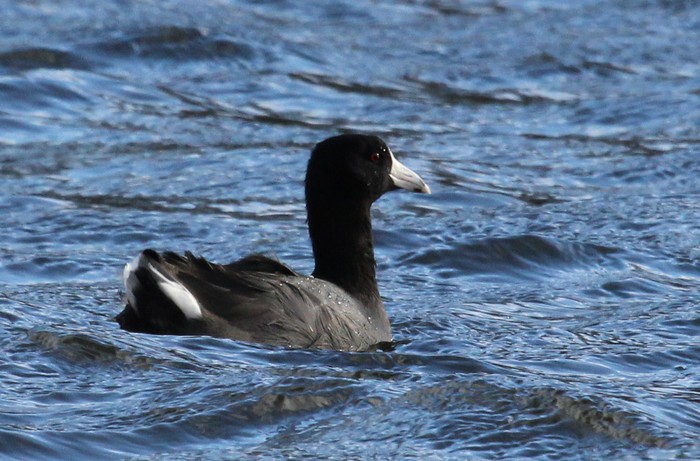
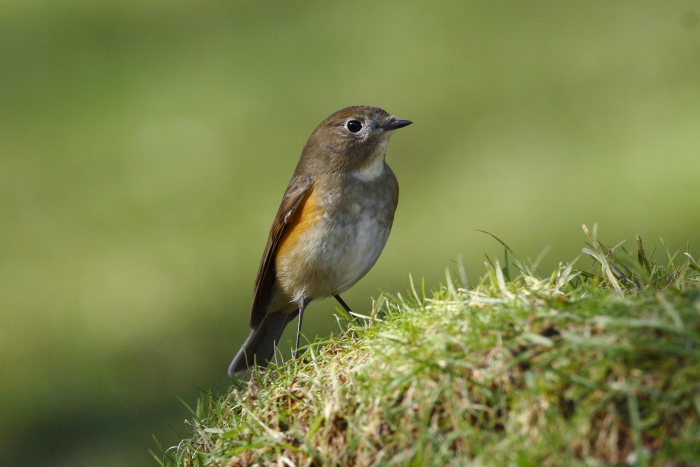
Gloucestershire continued to host the showy first-winter male Red-flanked Bluetail at Marshfield all week. It’d be easy to scoff along the lines of how the mighty are fallen, how this once mythical species has now become practically commonplace, but who’d be that churlish? With 115 accepted British records to the end of 2012 Red-flanked Bluetail is still a pukka rare bird, for all that annual records have accelerated in the past 20 years. Once you factor out the east-coast and autumnal bias, you’re left with very few records indeed. So the photogenic Marshside bird is one to unashamedly revel in and enjoy. As if you needed telling…
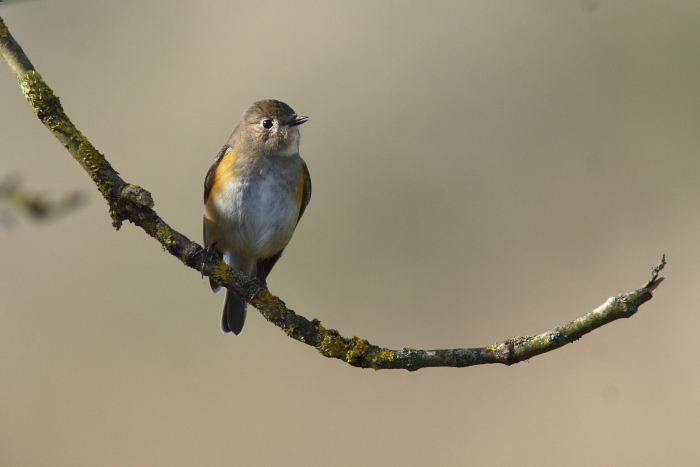
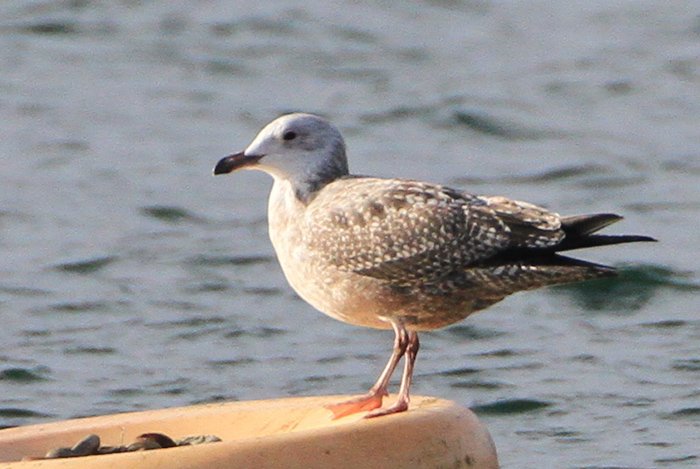
Hot on the heels of recent records in Argyll’s Campbeltown and Co.Mayo’s Barnatra (present until March 3rd and February 26th respectively) another first-winter individual of the species was uncovered in Co.Louth at Cruisetown Strand on March 2nd. Only the third record for the county (and probably only the second individual), this American Herring Gull was a quality find. Surely there are one or two more still out there to be found after a winter of westerly gales?
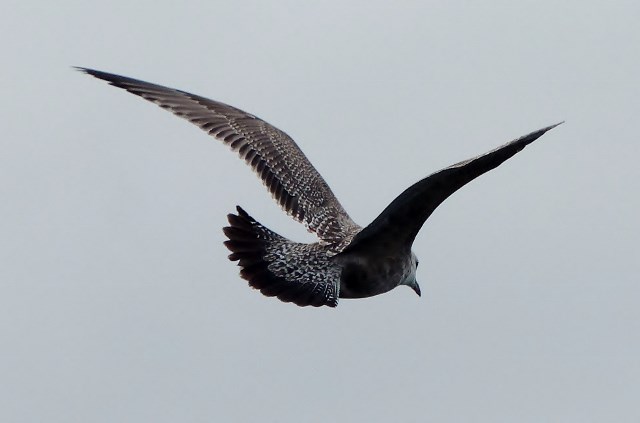
If last week was rather quiet on the seabird front, this week was positively deathly. You could hear a pin drop out there on the headlands of Britain and Ireland. The only star in the firmament was the White-billed Diver off South Ronaldsay (Orkney) at St Margaret’s Hope on February 28th and nearby on March 3rd. There may have been a dead Little Auk out there somewhere too, but that smacks of scraping the barrel…
On then with no further ado to Herons, Egrets & allies, and in particular the calming restorative of a good dose of Glossy Ibises. 19 individuals were reported from 15 British and Irish counties, with some new faces amongst them. Starting in the north, one was again on Orkney’s North Ronaldsay on March 2nd; the only Scottish record again this week. Back into northern England and a single bird noted in Co.Durham at Boldon Flats NR on February 26th. The bulk of British ibis action was to be had further south still, with single birds recorded flying over Kingsbury (Warwickshire) on 28th; still at Hemingford Abbots (Cambridgeshire) on March 1st; and at Lowdham (Nottinghamshire) on 1st-3rd. Meanwhile in East Anglia the long-staying bird at Martham (Norfolk) was still present on 26th, moving to Potter Heigham by 2nd; in Suffolk the two birds remained at Oulton Broad until 28th with only one to be found there thereafter until 3rd. A further two birds were in West Sussex at Bognor Regis on 2nd-4th. A little further along the south coast in Kent and two more birds were to be found, these being singletons at Westbere GPs from 1st-2nd, and the bird that’s been roaming the Dungeness area for some time finally more settled in Lydd until 4th – for want of a companion of its own species, it’s been making do with some domesticated Emu!
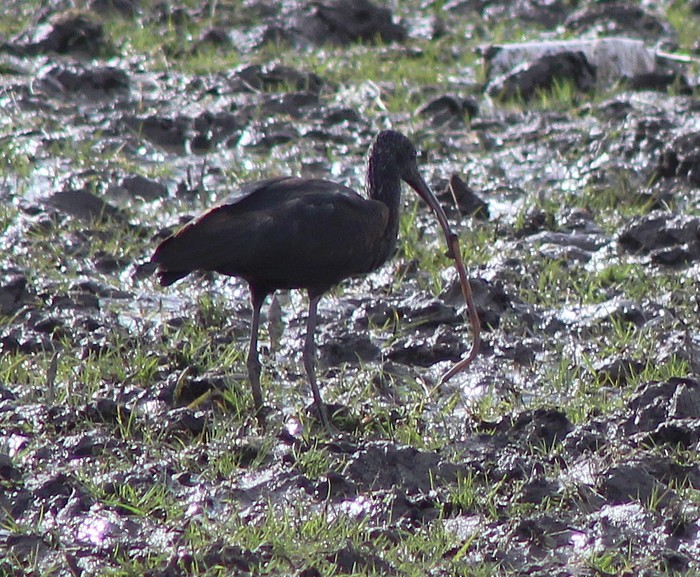
After just one record of Glossy Ibis in Ireland last week, a much stronger showing this week with six birds from five locations. Single birds were in Co.Armagh still at Oxford Island from February 28th – March 2nd; in Co.Wexford again at Cahore on March 1st; and at Cabragh Wetlands (Co.Tipperary) and Shannonbridge (Co.Offaly) both on 1st. Two birds were at Sligo (Co.Sligo) from February 26th – March 4th.
Great White Egret numbers were up slightly with 24 birds reported from 13 counties this week. Dungeness (Kent) held three birds on March 2nd; while a count of three birds was returned from Summer Leys NNR (Northants) on the same day. Elsewhere duos were at Shapwick Heath (Somerset) and Ditchford GPs (Northants) on February 27th; and on Llanrhidian Marsh (Glamorgan) on 1st. Single birds were recorded at Hardwicke (Gloucestershire), Hale Marsh (Cheshire), Swineham Point (Dorset), Yantlett Creek (Kent) and South Walsham (Norfolk) all on 26th; at Shapwick Heath (Somerset), Padworth Lane GPs (Berkshire), and Frodsham Cheshire on 27th (the Cheshire bird still there on March 2nd); at Llangorse Lake (Powys) still on 28th; still at Coate Water (Wiltshire) and again at Warton Bank (Lancashire) on 1st and 3rd; at King’s Sedgemoor (Somerset) on 2nd; and at Rye Harbour (East Sussex) and Ongar Hill (Norfolk) on 3rd.
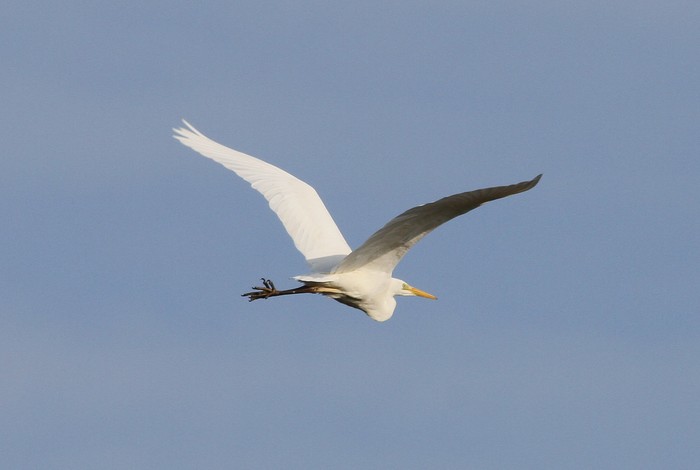
And so to Spoonbills, where Dorset and Poole Harbour in particular continued to boss the news. The four birds remained in the county at Lodmoor until March 3rd, whilst on February 28th a waterborne count in Poole Harbour tallied 20 birds. Settled birds remained in East Sussex at Cuckmere Haven until 2nd, and at Vange Marsh (Essex) still on 1st. Single birds were reported from Suffolk at Minsmere on 2nd and North Warren on 3rd; and in Norfolk on 1st at Cley, with two birds at Holkham on 2nd, and a singleton at Breydon Water on 3rd. Further singletons were in Kent at Yantlett Creek on February 26th, and on Farlington Marshes (Hampshire) from February 27th – March 2nd. Ireland accounted for three birds, singles at Castle Espie (Co.Down) until March 1st, at Dungarven (Co.Waterford) still until 2nd, and at the Wexford Wildfowl Reserve (Co.Wexford) on 3rd.
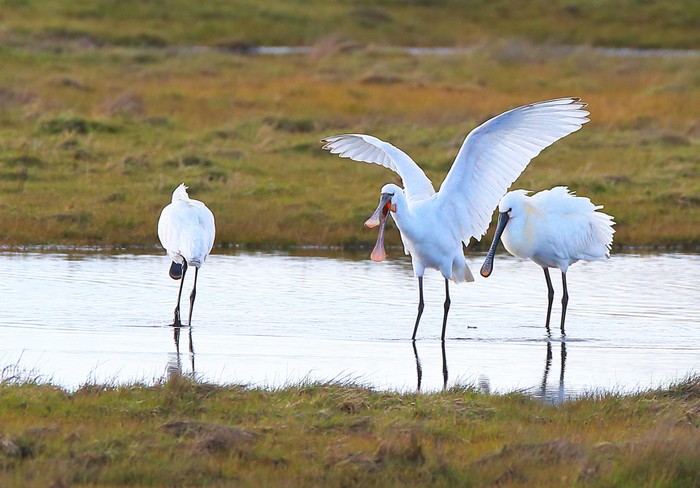
Away from Norfolk, Common Crane reports were limited to the two young bird around Cheselbourne (Dorset), still present until March 4th, and two further birds seen at Stonea (Cambridgeshire) on 4th.
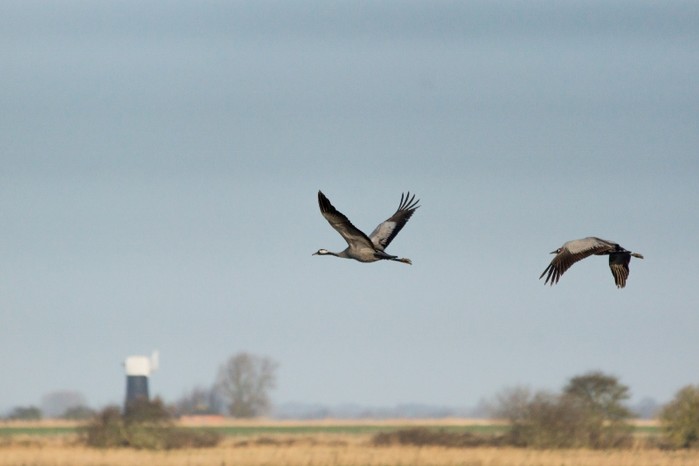
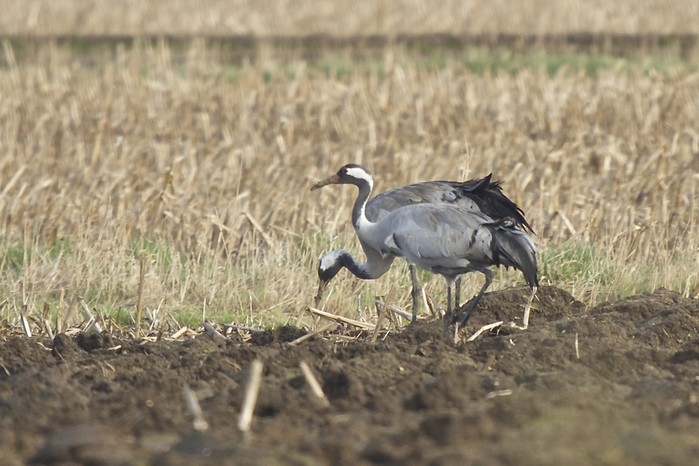
Islay continued to host Richardson’s Cackling Geese at Loch Skerrols (Argyll) from February 27th – March 4th, and at Eorrabus on 3rd.
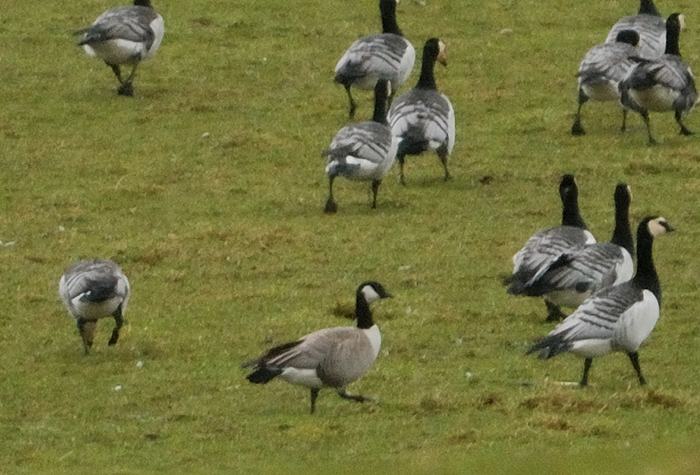
Reports of Snow Geese came in pairs from around Scotland, with the settled white and intermediate morph duo at Tayinloan (Argyll) until 2nd; and the white duos still on South Uist at Garrynamonie (Outer Hebrides) until February 28th and at Rattray Head (Aberdeenshire) until March 2nd.
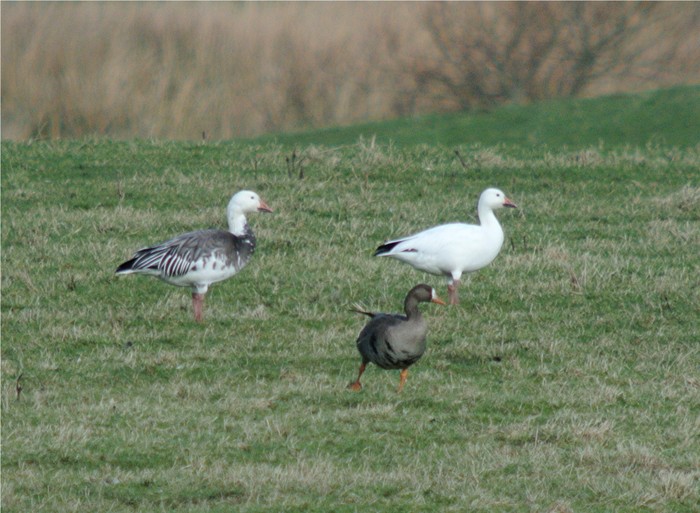
Black Brants continued to recover from their nadir of two birds a fortnight ago, and as many as nine individuals were logged this week. Hampshire dominated the news (Hampshire is the new Norfolk this week where the species is concerned) with reports on March 1st from Hayling Island, Sturt Pond, and Farlington Marsh. Earlier in the week individuals remained in the Dawlish Warren area still on February 26th, and in Cumbria on Roa Island on 28th. Further individuals were logged in the opening days of March at Kilnsea (East Yorkshire) on 1st; and at Kirton Creek (Suffolk), Cockthorpe airfield (Norfolk) and Pen-clawdd (Glamorgan) on 2nd; with two adults in Suffolk at Collimer Point on 4th.
In Highland, the adult drake Black Duck remained at Strontian until March 2nd.
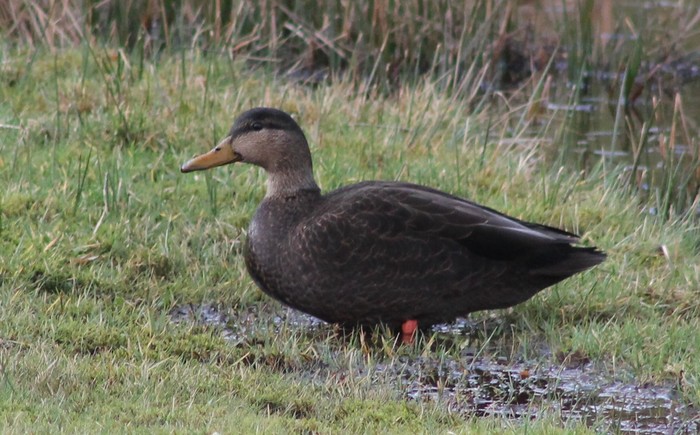
Numbers of drake Green-winged Teals fell away during the period with a mere nine birds being reported. Old faithfuls remained at Newgale (Pembrokeshire) on February 26th, and at Saltholme RSPB (Cleveland) until March 3rd and Caerlaverock (Dumfries & Galloway) until 4th. Further birds were at Burton Mere (Cheshire) on 26th; Rattray Head (Aberdeenshire) on 27th; on Orkney on North Ronaldsay and Mainland both on March 1st; at Broadwood Flash (Ayrshire) on 2nd; and at Crossens Outer Marsh (Lancashire) on 3rd. Elsewhere in Scotland the Blue-winged Teal was again on the River Dee at Threave (Dumfries & Galloway) on 1st-2nd.
The lingering drake Lesser Scaups remained in Highland at St John’s Loch until March 1st and Loch Watten until 4th, and at Tittesworth Reservoir (Staffordshire) until 4th; the female was still in Ireland at Dunfanaghy New Lake (Co.Donegal) on February 26th.
In Scotland the female Ring-necked Ducks remained steadfast on North Uist’s Loch Scaraidh to March 4th; whilst a drake was at Lugar (Ayrshire) on 28th also. Irish drakes meanwhile were still to be found on Lough Shivnagh (Co.Donegal) and Oxford Island (Co.Armagh) on March 1st, and at Castleward (Co.Down) and Knockaderry Lake (Co.Waterford) on 2nd. A Ferruginous Duck was at Hampshire’s Blashford Lakes on 1st-4th.
Three American Wigeons were logged in Scotland this week, at Loch Bee and Bornish on South Uist (Outer Hebrides) both on February 28th, and at Udale Bay (Highland) again on March 1st. Ireland accounted for a single drake still at Tullaghan (Co.Leitrim) on 1st-2nd.
It was honours-even between Scotland and Ireland where King Eiders were concerned this week: a drake at Yellow Craig (Lothian from February 27th – March 2nd, and a queen again at Ruddon’s Point (Fife) on 1st-3rd; whilst in Ireland queens remained in state at Cahermore (Co.Cork) on 26th-1st, and at Blacksod (Co.Mayo) on 28th.
Numbers of Surf Scoters on the sea off Conwy’s Pensarn failed to match last week’s impressive tallies, but were recorded daily and peaked at least six drakes there on February 27th. Single birds were recorded in Scotland with drakes at Musselburgh (Lothian) from 27th-March 4th; and Largo Bay (Fife) on 1st. The first-winter drake remained in Cornwall around Mount’s Bay until 3rd. In Ireland, the first-winter drake was seen again at Courtmacsherry (Co.Cork) on 1st; the drake at Newcastle (Co.Down) still present on 26th was joined by a female there by March 1st; and a further drake was off Mullaghmore (Co.Sligo) from 28th-2nd.
A report of a female White-winged Scoter off Titchwell (Norfolk) on February 28th alas came to nothing, the individual in question being re-identified the following day as a female Velvet. One day, Norfolk, one day…
After recent weeks’ slim pickings amongst the Shorebird records, a veritable feast this week. Hampshire’s Lesser Yellowlegs at Lepe CP remained there until March 4th, whilst elsewhere in the county the Long-billed Dowitcher surfaced again at Pennington Marshes on February 28th – March 1st. Meanwhile, down in Cornwall an American Golden Plover was to be found at Porthgwarra on 1st. Finally, heading way up country to North Uist, the Marsh Sandpiper was reported once more from the Outer Hebrides on 3rd, at Loch nam Feithean – last reported on January 19th, it’s been a while... but with a bird as out of context as this one, the rule book is being rewritten – and the bird certainly hasn’t read it.
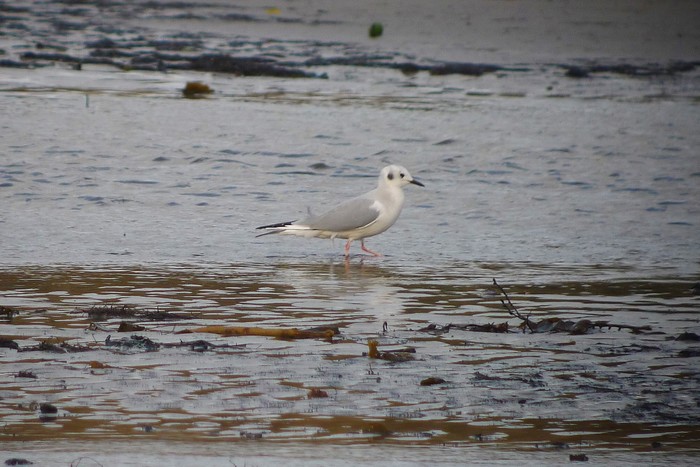
It was adult Bonaparte’s Gulls that dominated the rarer gull species this week, with four birds recorded the length of Britain. The settled bird remained in Devon at Dawlish Warren on February 26th, whilst the bird at Thurso (Highland) was present from 26th-27th still. The intermittent bird in Glamorgan was reported once more at the Cardiff Heliport on 27th. It was to the new month for the fourth and new bird of the quartet, another adult at Ormsary by Loch Caolisport (Argyll) on March 2nd-4th.
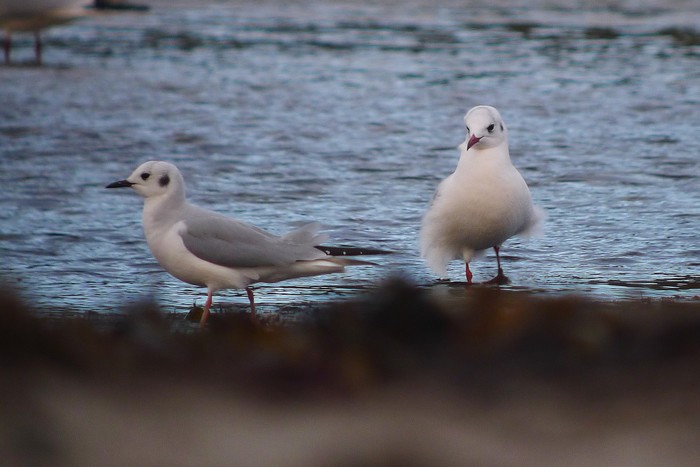
Ireland retained a fine adult Ross’s Gull at Poolbeg (Co.Dublin) until March 1st, whilst in Co.Cork the first-winter Laughing Gull remained at Ballycotton until 2nd.
Ireland as always dominated the records of Ring-billed Gulls during the week, with 12 birds logged from 5 counties. England managed two records, the regular adult in Hampshire at Gosport until March 4th, and a second-winter in Manchester at Audenshaw Reservoirs on 1st. Wales and Scotland returned one record apiece, an adult at Blackpill, Gower (Glamorgan) on 1st-3rd, and an adult in Fife at Newburgh from February 28th-March 4th.
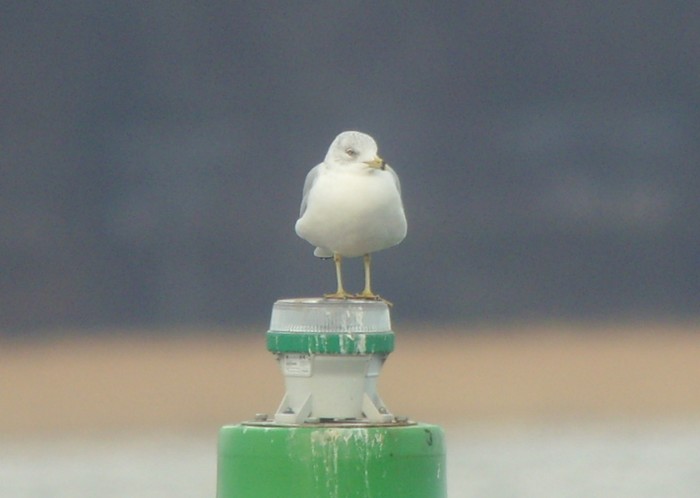
Irish records enjoyed multiple occurrences in Cork (Co.Cork) peaking with three birds (two adults and a first-winter) on February 26th; and at Nimmo’s Pier (Co.Galway) with three birds (again, two adults and a first-winter) on March 2nd. Further individual adults were at Portrush (Co.Antrim) on February 28th still; at Tramore (Co.Waterford) from 28th-March 2nd; at Glin (Co.Limerick) and Carrickfergus (Co.Antrim) on 2nd; and at Lough Aderra (Co.Cork) on 3rd. A second-winter bird was at Bantry (Co.Cork) on 1st.
Numbers of Glaucous Gulls remained on a par with last week, with around 160 birds logged. Their distribution remained broadly similar too, with around 80 of these being in Ireland alone, and some particularly chunky counts at two locations in particular: 14 birds were recorded in Co.Wexford between Carnsore Point and Tacumshin on February 26th; and a further count of 14 birds came two days later on 28th at Cross Lough on the Mullet (Co.Mayo).
Scotland accounted for around 30 birds, though with no single-site counts approaching those over in in Ireland. Notable counts all came from the Outer Hebrides, with four birds on North Uist at Aird an Runair on February 26th; and on South Uist three birds at Ardivachar Point on 27th, and four birds at Askernish on March 3rd.
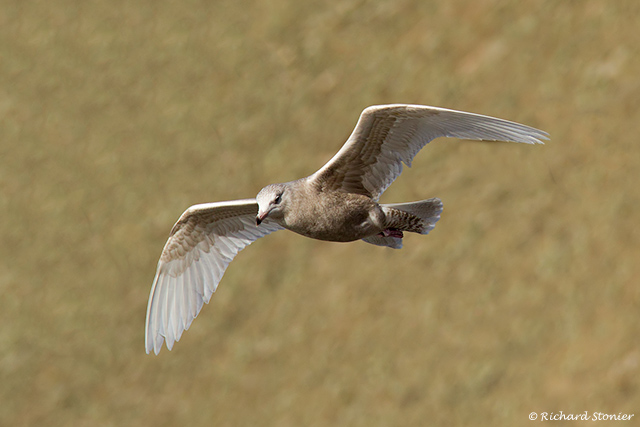
Welsh records amounted to a mere half dozen scattered across the country; England meanwhile accounted for the balance of all records, with around 45 records logged in the course of the week, once again showing a strong south-westerly bias and Cornwall in particular enjoying something of a Glaucous Gull glut with plenty of individual birds but some multiple sightings too, with February 26th being particularly busy: duos were seen that day on the Hayle Estuary, at Sennen Cove, and in St Ives, while four birds were noted at Mousehole.
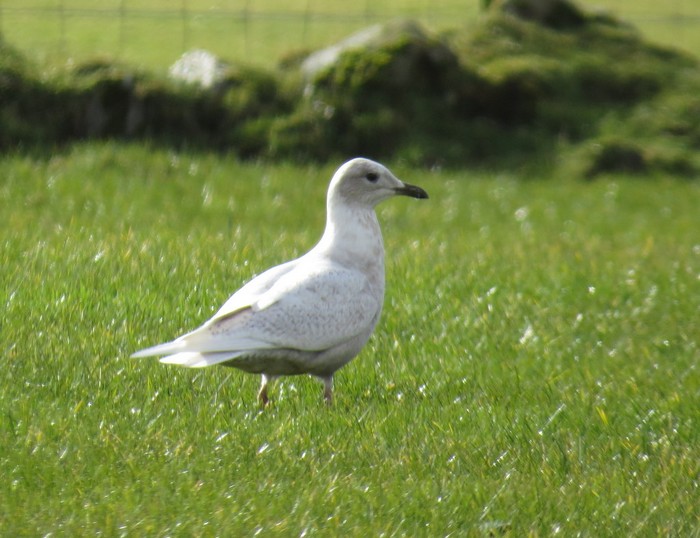
/iceland_ad2_mar4c.jpg)
Numbers of Iceland Gulls appeared to pick up a little on last week with around 120 individuals noted. Ireland contributed some 30 birds, with notable tallies coming from Co.Donegal’s Killybegs (with four birds there on February 26th rising to six birds by March 2nd), Cross Lough on the Mullet (Co.Mayo) with four birds on 28th, and Timoleague (Co.Cork) on 2nd with five birds noted there. Around 25 records came from Scotland, with a notable count of three birds at Loch Oire (Moray/Nairn) on 1st. Away from the slim pickings in Wales, where numbers barely struggled into single figures, the bulk of the Iceland Gull records this week came from all over England, with plenty of inland records to enliven the daily birding of those without the benefit of a coastal location. Whilst most involved single birds there were several duos to be had, and some trios too: three birds were at Richmond Bank (Cheshire) on 28th, and three birds were in the roost at Somerset’s Wimbleball Lake on 3rd.
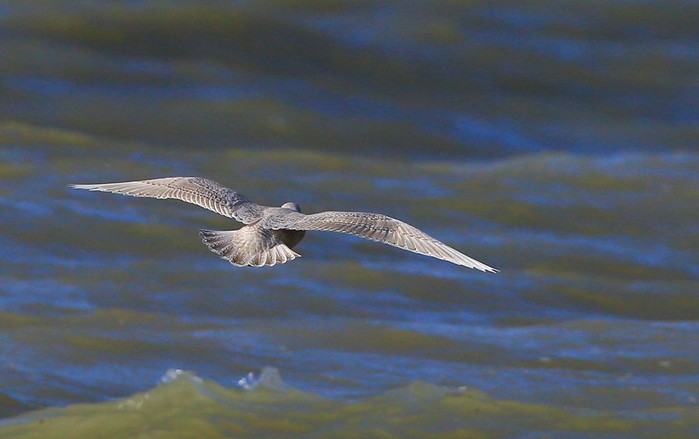
Kumlien’s Gulls numbers reduced on last week by 25%, down to a still very respectable 30 birds in all. A third of these were in Ireland, with Killybegs (Co.Donegal) once again dominating the news with four birds (three juveniles and one adult) noted there on February 26th. Cross Lough on the Mullet (Co.Mayo) accounted for three birds on 28th. The remainder of Ireland’s tally were single birds: a second-winter at Nimmo’s Pier (Co.Galway) on 26th; another second-winter at Timoleague (Co.Cork), and a juvenile at Carnsore Point (Co.Wexford) on March 1st.
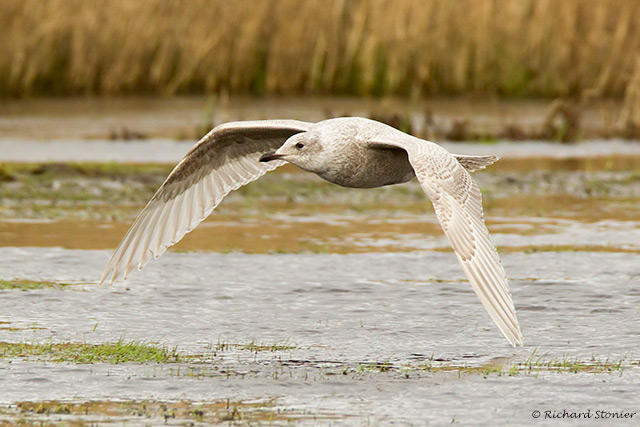
Five birds were logged in Wales: juveniles at Newgale (Pembrokeshire) on 26th; at two locations on the Gower (Glamorgan) between February 26th-March 2nd; and at Ogmore-by-sea (Glamorgan) on 2nd. A second-winter was on the Teifi Estuary (Ceredigion) on 1st. Scotland meanwhile accounted for nine birds, including three at Thurso (Highland) – a third-winter on 27th, and two juveniles on 2nd. Balranald on North Uist (Outer Hebrides) enjoyed two birds (an adult and a third-winter) on 3rd. Otherwise Scottish records all involved single juvenile birds: at Loch Oire (Moray/Nairn) on 26th; at Scrabster (Highland) and Bowmore, Islay (Argyll) on 27th; and at Bruichladdich, Islay (Argyll) on 2nd.
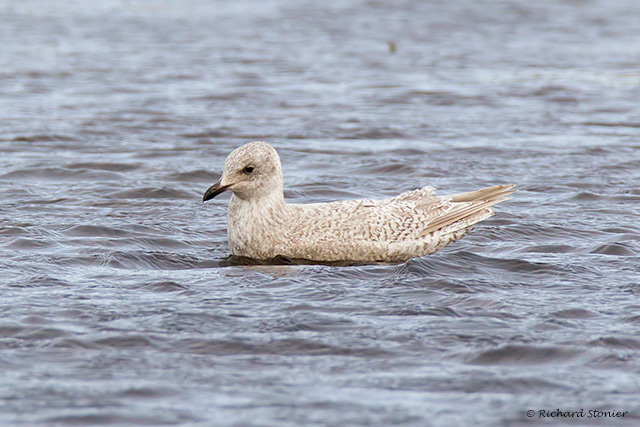
And finally to England, where the remaining half dozen confirmed birds were to be found. The settled birds in the Penzance area of Cornwall and at Littlehampton remained until March 1st and 4th respectively. At least one bird, a second-winter, was to be found in the vicinity of the Fleet (Dorset) until 3rd. The remaining three birds were all in Yorkshire: at Nosterfield Quarry (North Yorkshire) on 28th; a third-winter at Wheldrake Ings (North Yorkshire) on 1st; and an adult at Wintersett (West Yorkshire) on 2nd.
Raptor news was dominated this week by a magnificent white morph Gyr Falcon that appeared for one fortunate observer in the hills above Wester Quarff (Shetland) on February 27th. Alas for Shetland birders, this was not to be seen again...
Rough-legged Buzzards remained Norfolk’s exclusive preserve this week with the two birds seen intermittently in Waveney Forest, and the singles again in the Ongar Hill area on February 26th, and quartering the dunes of Burnham Overy until March 2nd at least.
Once again the three wintering Hume’s Yellow-browed Warblers recorded recently made it into another week. The individual in the soggy Dungeness trapping area was reported on February 26th and again on March 4th. The other Kentish bird in Ramsgate cemetery was still present on March 2nd at least, and the Warwickshire bird at Hams Hall remained until 3rd at least.
Yellow-browed Warblers meanwhile caught birders’ attention once more, mainly in the southwest, and even at this late juncture in the winter there was a new bird to be found, Somerset’s second of the winter, this time in Bruton on 1st-3rd. Elswehere in the southwest single birds were logged in Cornwall at Torpoint and Gwennap still on 26th, and at Ponsanooth on 2nd. In Devon two birds were at Topsham on 2nd. The bird at Studland (Dorset) was reported again on February 26th. Breaking the southwest monopoly was the bird still in Uffmoor Wood (Worcestershire) from February 26th-March 1st.
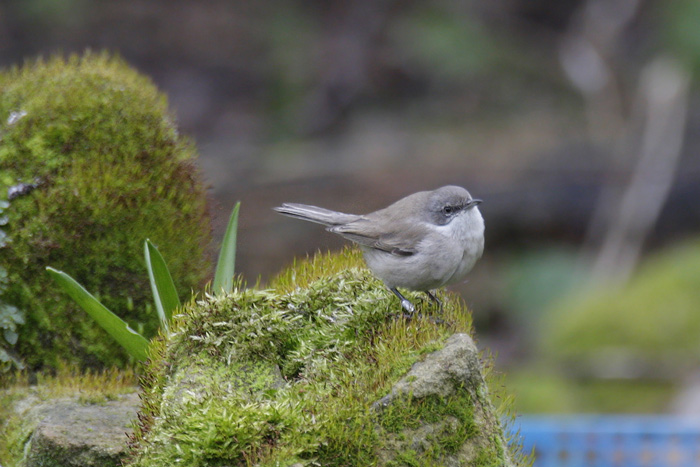
Final warbler news of note came in the form of the blythi Lesser Whitethroat still in Tynemouth (Northumberland) this week until March 3rd at least. With DNA tests now opening birders’ eyes to the possibilities of wintering eastern forms of Lesser Whitethroat, it comes as no surprise that other putative candidates are now being reported where once they might not have been. Two further probable birds for an eastern origin were at Egginton (Derbyshire) and Retford (Nottinghamshire) this week, both still present on 3rd. Now where’s a conveniently moulted feather when we need one?
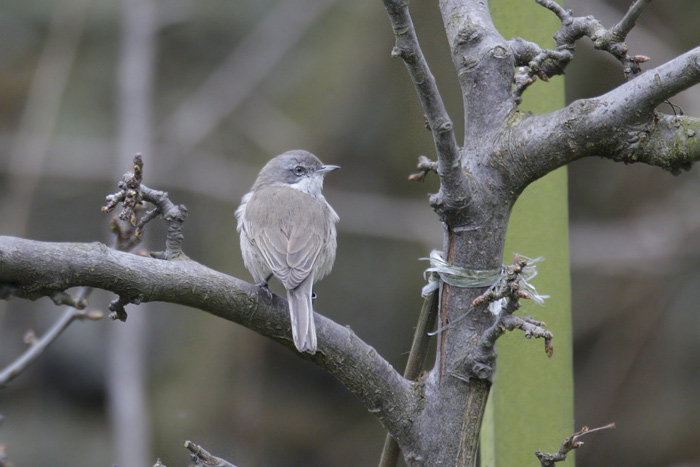
Back down to Kent now where the two male Penduline Tits remained at Hooker’s Pit at Dungeness on February 28th, though things went quiet for a few days before they were reported again on March 3rd.
Ireland’s Hoopoe remained in Carlow (Co.Carlow) on March 2nd. It won’t be long now before this presumably overwintering bird is joined across Britain and Ireland by plenty more overshooting brethren...
Somerset did well this week with another passerine of note in addition to the Bruton Yellow-browed Warbler - a Richard’s Pipit was found at Wall Common on March 3rd and remained there on 4th.
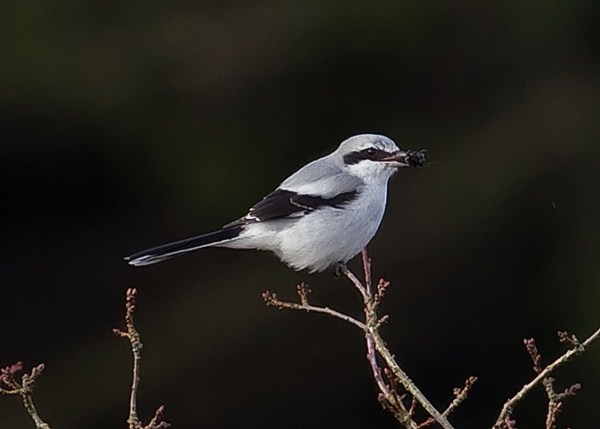
Great Grey Shrikes put in a fair showing this week with 16 individuals logged during the week from 12 counties. Three records came from Hampshire: in the Bolderwood area still on February 26th-March 4th; at Kingsclere still on 27th-28th; and on Bransbury Common on 1st again. Gloucestershire accounted for two birds, at Great Rissington and at Staple-edge Wood still on March 1st. Four birds were logged in Welsh counties: in Wentwood Forest (Gwent) on February 26th-March 3rd; at World’s End (Clwyd) on 1st-3rd; and in Ceredigion at Cross Inn Forest still and in Powys at Craig Cerrig Gleisiad on 4th.
Two-barred Crossbills were still largely all present and correct on the past week, with even the Leith Hill Wood female showing up again in Surrey on February 26th. The two single males were still at Broughton (Lincolnshire) on February 28th, and at Lynford Arboretum (Norfolk) on March 2nd and 4th. Flocks remained roaming the Serridge ridge in Gloucestershire, and in South Yorkshire at Broomhead Reservoir all week long. The Gloucestershire flock involved at least 12 birds on March 1st; whilst in South Yorkshire seven birds were still present at Broomhead on March 1st.
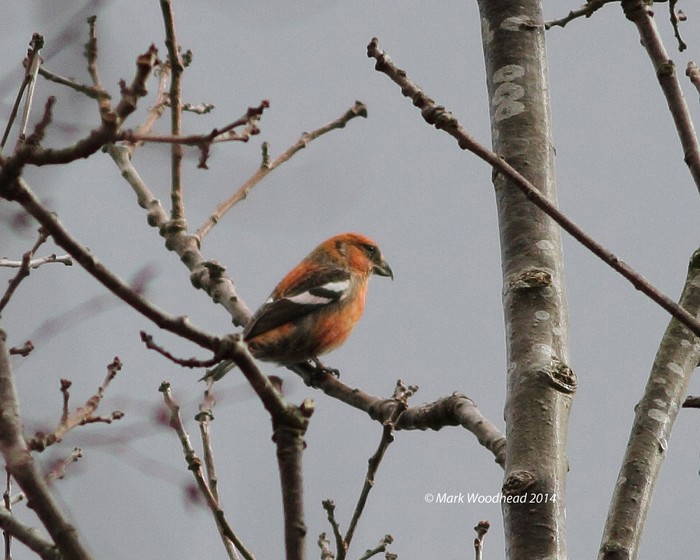
Norfolk enjoyed a monopoly on Parrot Crossbill sightings, with the flocks remaining at Holt and in Waveney Forest respectively. Holt’s flock fluctuated throughout the week, but a healthy 15 birds remained on March 2nd at least. Eight birds were recorded in Waveney Forest on the same day.
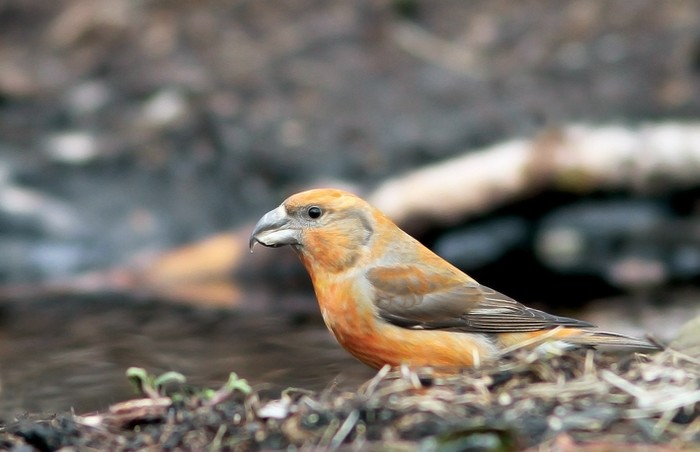
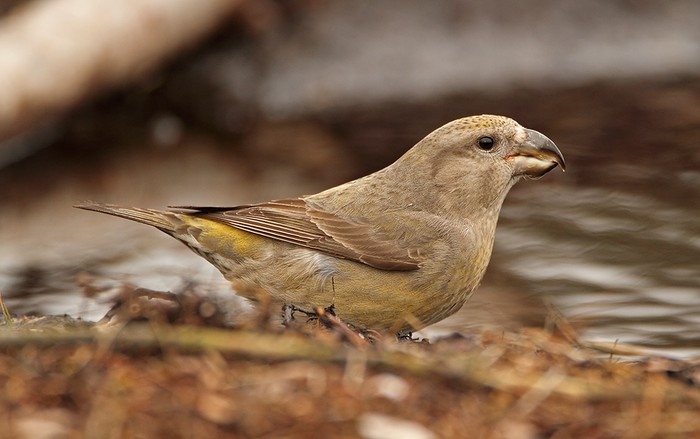
Waxwings remained in precious short supply this week, with just two notable flocks comprising some 40 birds in Aberdeen (Aberdeenshire) from February 28th – March 4th; and 42 birds in Buckie (Moray/Nairn) on March 3rd. Those aside, numbers were similar to last week’s paltry showing, with some 30 birds scattered widely in the northern and eastern counties.
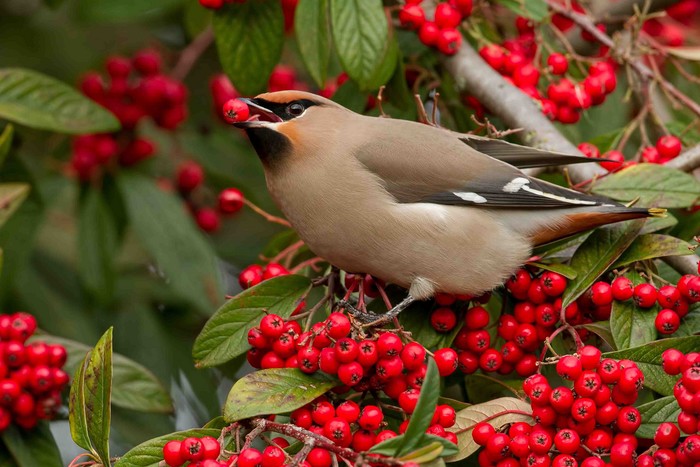
Lastly, but by no means least, we have the near-miss of the week. In my predictions last week I hoped someone might turn up a Pine Bunting; alas, I chose the right family but the wrong species... Hats off then to the finder of Lincolnshire’s Little Bunting at Lea Marsh, present from February 25th-March 4th.
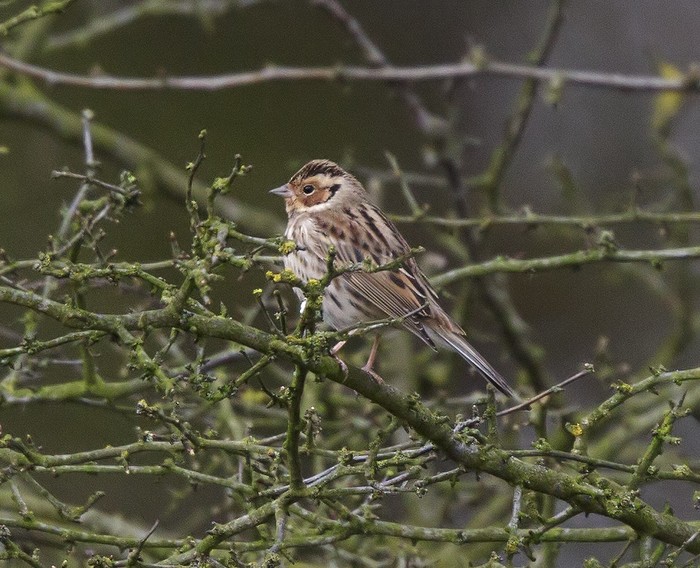
[This week, the Rarity Round-Up predictions will mostly be all about blind optimism. It can’t hurt.]
It’s amazing what a difference a week makes, isn’t it? Peering back into the mists of time and rarities past in order to divine what the coming week might bring, and there’s suddenly a distinct whiff of Spring in the air. With past records of such southern exotica as Great Spotted Cuckoo, Alpine Swift and Sardinian Warbler it feels as if anything might be possible once again. Begone, winter! There’s migration under way out there.
(This week also marks the anniversary of What Happened At Spurn In 1983. Surely enough time has elapsed now that we can all talk about this like grown-ups? I mean, it’s not as if there haven’t been subsequent gettable Tengmalm’s Owls is it?)
What’s that you say? There haven’t? Oh. Time to move swiftly on...
So, what of the coming week? As already noted, it’s a good week for an overshooting Great Spotted Cuckoo, with five records this week in the past 25 years from which to draw some optimism. The records show a predictably southerly bias, coming from Kent, Dorset, Scilly and Pembrokeshire –and with the exception of the long-staying bird on St Martins (Scilly) during March 11th – April 1st 1993 they are all at best two-day birds. The moral of the story is that if you want to see one, you need to act quickly once the news breaks.
It’s also a good week for Killdeer with four past records to draw upon. Another fine, striking species that can hardly fail to stir the blood. I’ve had my share of Glaucous Gulls for one winter. It’s time to start birding in colour again...
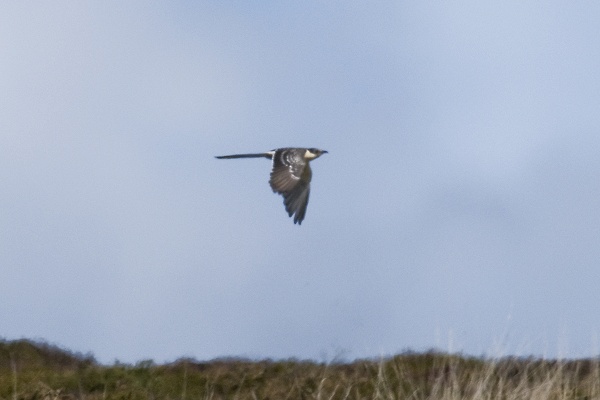
Jon Dunn
05 March 2014
Many thanks to this week's contributors for their photos and videos












